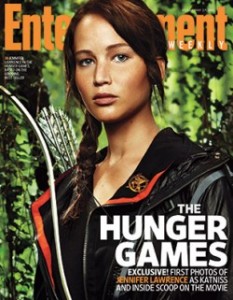 A friend and fellow PhD student is currently reading the Hunger Games trilogy, and she’s reading it compulsively, as required by the book itself.
A friend and fellow PhD student is currently reading the Hunger Games trilogy, and she’s reading it compulsively, as required by the book itself.
When we first heard about the terrible Oslo massacre of July 22nd, she sent me the following email:
it is watching things like this on the news that make me never want to think about how i ‘enjoyed’ the hunger games!
It is a controversial thing to say, but I was immediately struck by how true it sounded. I hadn’t even thought of making such an association, but now that she’d made it, I couldn’t get it out of my head.
Of course there is absolutely no direct link between the Hunger Games and the shooting perpetrated by Anders Behring Breivik. But watching the news and listening to the horrifying testimonies of the teenagers and young adults present on Utoya island during the seemingly neverending shooting, I cannot help but think, just like my friend did – This is what a cold, organised, mass killing of a country’s young people really looks like, and really feels like.
This is the kind of circumstances when you realise that the enjoyment of fiction can powerfully anaesthetise us to the real equivalent of what it portrays. The Hunger Games plays on both modern and ancient fears to force us to watch a horrible, but oh-so-compulsively-watchable, theatre of child and adolescent sacrifice. It is an artificial construction, of course – no less than a chimera to be enjoyed and feared at the same time. The teenagers in the Hunger Games are unnaturally equipped to deal with thoughts of death. They face it, they give it, they fight against it. Our fear and delight in reading about their endeavour is safely enclosed within the dystopian universe of the books.
And as a friend pointed out recently during a conversation, the hype surrounding the upcoming Hunger Games film is giving rise to a strangely morbid display of young actors and actresses whose roles are just numbers, on the model of ‘Laura Smith, n.3 – runs into trouble at the Cornucopia’. Understand: this pouty Californian blonde dies within the first ten minutes of the movie. But look at her! It’s her first big Hollywood part! She doesn’t die, of course – only her character, so that’s ok.
And suddenly we are interrupted in our desensitised reading of adolescent death by the occurrence of the unimaginable: scores of real, tangible, material adolescent deaths. Deaths that will entirely rewrite the history of the country, that will forever prevent hundreds of friends and relatives from living a normal life.
Of course there is nothing wrong with reading the Hunger Games. Of course we need catharsis, and we need fiction to meddle with our vision of reality and deal with its excesses. And of course the Hunger Games does not defend murder – it denounces it.
But when faced with such a brutal reality check, I am uncomfortable and uncertain. I will draw no conclusions other than ‘This is what the mass killing of a country’s young people really looks like.’
by Clementine – first posted on the Cambridge Children’s Literature Students’ Blog

